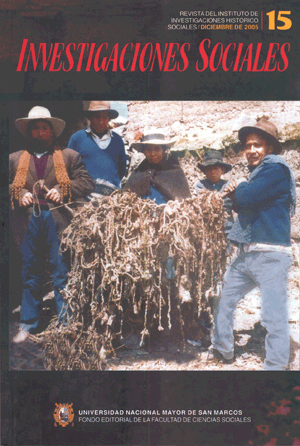Abolición de la esclavitud en el Perú y su continuidad.
DOI:
https://doi.org/10.15381/is.v9i15.7008Keywords:
Slavery, Ramón Castilla, Lima, Chinese people, migration, Peru.Abstract
This essay examines Castilla’s government politic to deal the problem of black and Chinese slavery in the middle of the XIX century. Manumission, compensation, landholders and hire are analyzed during the peak of guano business to specify the true meaning of the law of freedom of slaves in 1854.Downloads
Published
Issue
Section
License
Copyright (c) 2005 Humberto Rodríguez Pastor

This work is licensed under a Creative Commons Attribution-NonCommercial-ShareAlike 4.0 International License.
AUTHORS RETAIN THEIR RIGHTS:
a. Authors retain their trade mark rights and patent, and also on any process or procedure described in the article.
b. Authors retain their right to share, copy, distribute, perform and publicly communicate their article (eg, to place their article in an institutional repository or publish it in a book), with an acknowledgment of its initial publication in Investigaciones Sociales.
c. Authors retain theirs right to make a subsequent publication of their work, to use the article or any part thereof (eg a compilation of his papers, lecture notes, thesis, or a book), always indicating the source of publication (the originator of the work, journal, volume, number and date).






